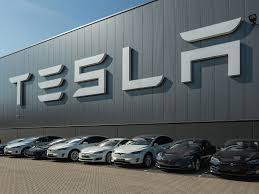Tesla Q2 2025 Earnings Reveal Largest Revenue Drop in Over a Decade Amid Market Challenges
Tesla Reports Revenue Decline and Stock Volatility in Q2 2025
Tesla, led by CEO Elon Musk, announced its second-quarter earnings showing a 12% drop in revenue year-over-year, totaling $22.5 billion, missing Wall Street expectations of $22.74 billion. This represents the largest quarterly revenue decline for Tesla in over a decade.
The company faced several challenges including reduced vehicle deliveries, which fell 14% year-over-year to 384,122 units in Q2, backlash due to CEO Musk’s political involvement especially with the Trump administration, and increased tariff costs. Tesla’s automotive revenue dropped 16% to $16.7 billion compared to the previous year, with revenue from regulatory credits halving to $439 million.
Elon Musk’s Outlook and Strategic Moves
Musk cautioned investors about possible rough quarters ahead, attributing some of Tesla’s struggles to the expiration of federal electric vehicle tax credits and tariff-related supply chain disruptions. Tesla also admitted limits on vehicle availability in the US due to these changes.
Despite the setbacks, Tesla is pushing forward with innovative initiatives, including the production ramp-up of a more affordable EV model expected in the second half of 2025. Additionally, Musk revealed progress on Tesla’s autonomous vehicle ambitions, highlighting the ongoing testing and expansion plans of the Tesla Robotaxi service in Austin, Texas, with intentions to roll out to California, Arizona, Nevada, and Florida pending regulatory approvals.
Market Reaction and Future Challenges
Tesla’s stock has experienced significant volatility in 2025, dropping about 18% year-to-date, the worst among major tech megacaps. Analysts flag increased competition from other automakers offering more affordable EVs with advanced features, especially in the US and Europe, where Tesla’s market share has diminished.
Furthermore, regulatory hurdles remain a critical factor, particularly surrounding Tesla’s full self-driving software and expanding robotaxi services. The company faces ongoing scrutiny from agencies such as California’s Department of Motor Vehicles regarding claims about its autonomous driving technology.
Conclusion
Tesla’s second-quarter 2025 earnings report underscores a challenging period marked by decreased sales, regulatory pressure, and market uncertainties. However, continued investments in AI, robotics, and affordable EV production reflect Tesla’s strategy to rebound and maintain its market leadership in the evolving electric vehicle landscape.







It’s clear that Tesla is facing a challenging period, with revenue falling due to a combination of external factors like tariffs and internal challenges like lower vehicle deliveries. The future of the EV market is still bright, though, especially with Musk’s focus on more affordable models and autonomous driving technology.